Is it better to search for commercial off-the-shelf tubing or design with a completely custom tube?
To answer that question, we’ll look at why standard tubing sometimes falls short and three critical tubing design considerations to keep in mind when you’re considering customized tubing as an option. But first, a video summarizing what we’ll cover:
Custom vs. standard tubing comparison
Here’s a chart to summarize the high-level differences between custom and standardized tubing.
But now let’s dig a little deeper and think about the factors that can influence your decision.
Factor #1: Time and money
The assumption surrounding customization, in general, is that it comes at a higher cost. The truth is custom metal tubing could save money by cutting out the middleman and producing less waste.
A distributor is essentially a middleman who includes a margin in their price. The logistics of the other players involved in the design, handling, finishing, and transport incur added costs too.
As an alternative, some companies turn to steel mills. Greg Whitman from Spuncast Centrifugal Foundry said that option also has its problems.
He explained that a specialty request from a steel mill may come at a much higher cost. Because you’re not purchasing a standard tube size, they often require a commitment to buy the entire length, which can add up.
Another choice for many industries is working directly with a metal foundry like Spuncast. Because they specialize in custom tubing, it cuts out all those layers and often results in lower overhead costs.
“We’re able to sell shorter lengths, so you don’t have to buy the whole section,” he said. “Instead, you can just buy what you need.”
Besides money, Greg mentioned that those “middlemen” also cost time. The more stops in the supply chain, the longer it takes for a finished component, and the more likely there will be delays.
“Working directly with a metal foundry specializing in custom tubing means one point of contact, faster turnaround, and less that could go wrong during the process,” he added.
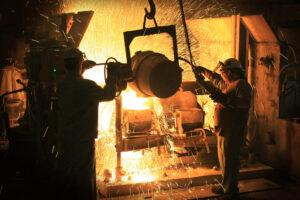
Factor #2: Specifications and performance
The most obvious advantage of having your metal tubing components customized is that it will be a tailor-made solution. Custom tubing creates precisely what you need. It also offers greater flexibility. There is no worry that the required tube size or wall dimension won’t exist with customization.
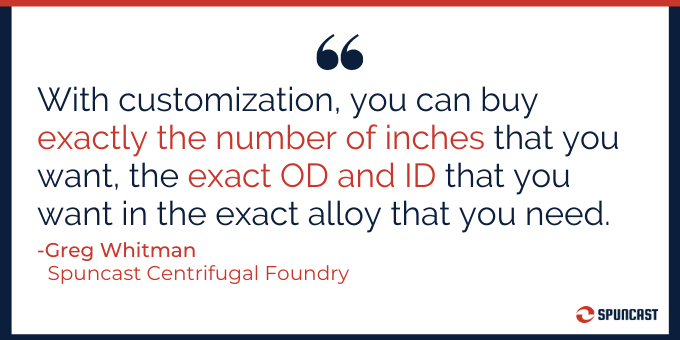
Consider the ideal specifications for your specific tubing and the application where it’ll be used. Contrast that with the available standard tubing choices.
In many cases, standard tubing does not exactly fit the specifications of your design and, therefore, cannot stand up to the intended application without further modifications.
Before either a standard or customized tube can be chosen, evaluating the intended environment’s characteristics is necessary. The tube’s material must be durable enough to withstand applications that could lead to exposure to things like:
Corrosion and erosion
Generalized corrosion leads to the dissolution of surface metal, which reduces the wall thickness, making the tube more prone to mechanical failure. It’s a threat that must be evaluated during the design and material selection phase of a project.
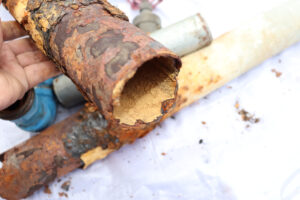
Temperature and pressure extremes
What are the minimum or maximum pressures the component must withstand? Just as importantly, what’s the full range of ambient temperatures it will operate within?
This is particularly important in applications where the transported fluid or outside environment could be subject to severe weather.
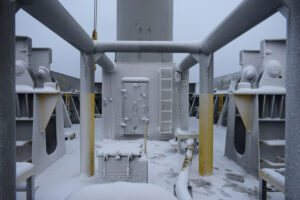
Factor #3: Product life cycle
The quality of your tube component determines the longevity of your end product. Improving the quality of a tube depends largely on balancing the chemical and physical properties of the material used.
The chemical properties involve how the material reacts with other elements. It’s critical in industries like gas and oil because the product will be exposed to many caustic compounds.
The physical properties include such things as tensile, yield, elongation, hardness, density, freezing and boiling points, and electrical properties. Material durability is essential in industries like food manufacturing because the equipment often runs 24/7 and must hold up.
Requests for a longer product life cycle are much easier to obtain when the process supports it. You can specify the base material to meet your design’s specifications with customization.
A thorough metal guide and the guidance of an experienced metallurgist can help determine the appropriate metal makeup.
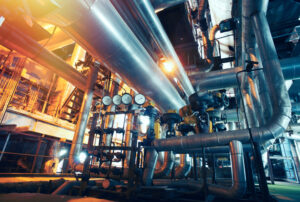
When does customization make sense?
Because there are hundreds of uses for metal tubing within each industry, supplies need to live up to particular physical and chemical characteristics.
To obtain those special requests, customization is looked to and often is chosen because issues with:
- Performance: Pre-existing tubing does not perform to their needs.
- Capabilities: Applications require tubing performance capabilities that are not available with off-the-shelf tubing.
- Development: Prototypes are being developed that require specialized tubing.
Additionally, finding a steady inventory of diverse and often unique “off-the-shelf” tubing at a reasonable cost can add unnecessary complexity to operations. It’s one of the main reasons many manufacturers turn to a customized solution.
When does standardized metal tubing make sense?
Though a customized tube may set your product apart from others, it isn’t always the best economical or efficient option. If a standard tube can serve the same or similar purpose as a fully custom tube, it makes sense to design your product around it.
In some cases, using a standardized tube could provide:
- Time Savings: The time it takes to design the custom tube, create the setup, and manufacture it can all be saved by using an off-the-shelf tube as an alternative.
- Cost Savings: Knowing time equals money, it stands to reason if the tube you require exists. Using it in your design will result in less money spent to design and manufacture a custom solution.
- Immediate Availability: A big advantage of using a standard tube is the accessibility and convenience of getting an off-the-shelf item.
- Simple Modifications: Many standard tubes can be modified to meet your design’s fit and function. An experienced foundry that provides the necessary secondary processes and offers an array of already made, standard tubes can alter a tube’s length, wall thickness, etc., as required.
Can your choice meet the demand?
Last year, IBISWorld reported revenue growth for the Metal Pipe and Tube Manufacturing Industry of 16.2% after 2020’s COVID related decline. They expect the sustained demand to continue into 2022 and beyond.
To meet those demands, today’s manufacturers want metal tubing that often stretches the capabilities of standard tubing. It takes a group of highly-skilled engineers and metallurgists to provide tubing solutions with the guaranteed quality, longevity, and exact design specifications needed.
The Spuncast Centrifugal Foundry engineers and metallurgists will meet or exceed your requirements. We’ll develop a collaborative, trusted relationship with your team from beginning to end.


